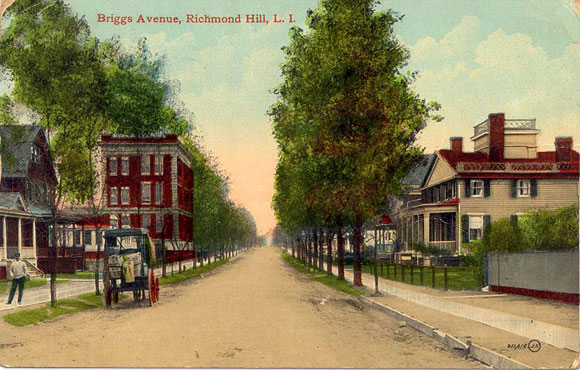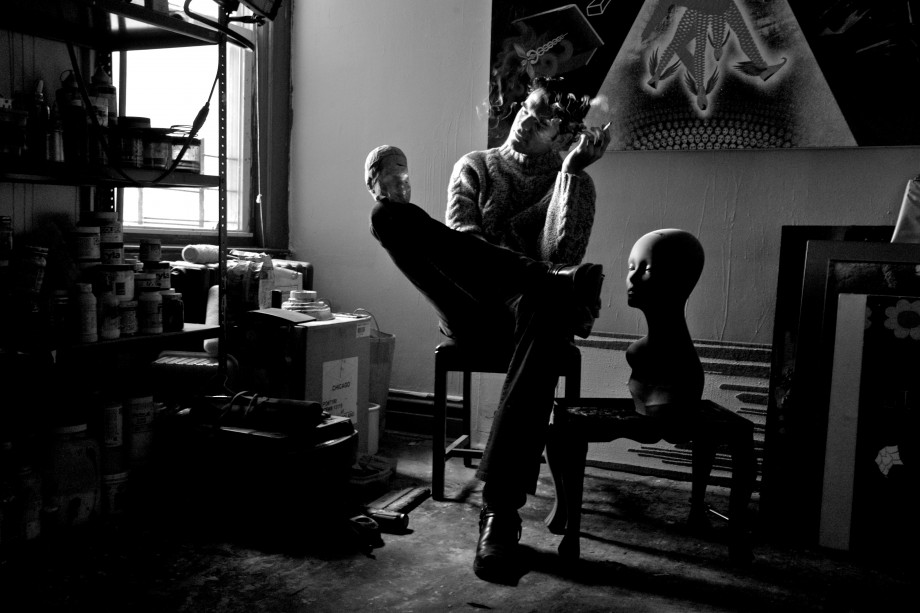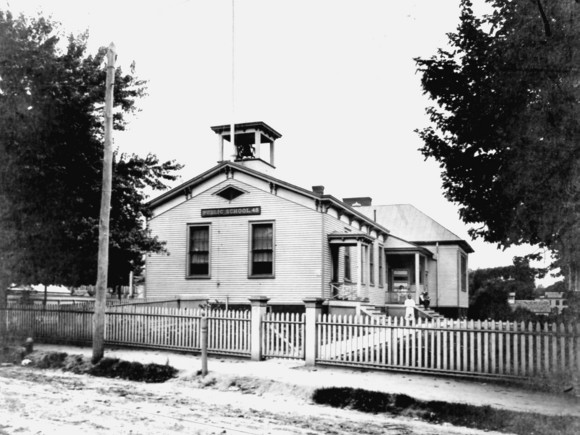New York City through Marlon James’ Booker Prize-winning novel
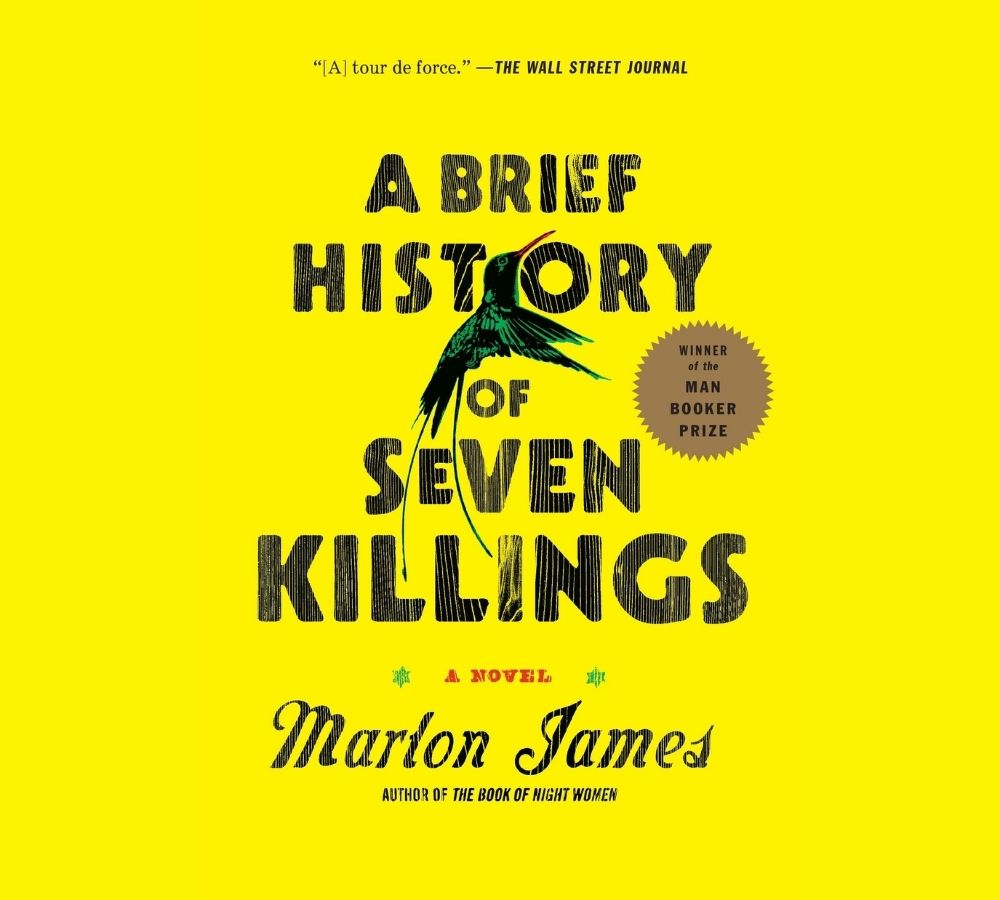
December 28, 2015
On December 3, 1976, Bob Marley was attacked by eight armed men. Entering his home at 56 Hope Road in Kingston, Jamaica, they shot wildly, hitting his manager Don Taylor in the spine and his wife Rita in the head. Bob was wounded in his arm. Somehow, no one died.
At the hospital, a reporter from the Jamaica Broadcasting Corporation asked Marley if he had seen his assailants. “Nuh, me nuh see nuh man who fired shot,” he said. In reality, he probably had.
The shooting had come just two days before he was scheduled to perform at a concert sponsored by the avowedly socialist Peoples National Party (PNP), whose rival, the Jamaican Labour Party (JLP), was being supported by the United States. Many felt an outside hand, perhaps the CIA, guided the gunmen.
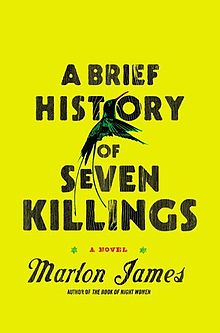
Who were these men, some of them boys, who came to kill this poet, this man of peace? What kind of Jamaica did they come from, and what became of them? Marlon James’ novel A Brief History of Seven Killings, winner of the 2015 Man Booker Prize, begins with these questions. It leads the reader through a dark history of modern Jamaica and its diaspora. The story is, in James’ words, both “fictional and not-that-fictional.”
The book spans two decades—from Kingston, Jamaica in the seventies to the nineties Bronx—and involves dozens of characters. Marley, who remains distant from the storyline, is referred to only as “The Singer”. He is seen mostly through the eyes of Nina Burgess, an impulsive socialite trying to escape Kingston, and Alex Pierce, an American journalist hoping to interview him. Both Nina and Alex find themselves in the crosshairs of a deadly political conflict.
Large portions of the book are narrated by the would-be assassins: gang leader and drug kingpin Josey Wales, his gay lieutenant Weeper, and Demus, who hates the police. Josey Wales’ character is based on Lester “Jim Brown” Coke, a JLP strongman who became an international cocaine baron in the 1970s after the JLP rose to power. In the 80s his trafficking pipeline stretched from Kingston to New York and beyond. His gang, the Shower Posse, was responsible for over a thousand murders in the United States alone.
The Americans in the novel come to Jamaica to take things. They take bauxite, music, women. They also take control. When socialist ideas begin to spread in Kingston, they foment chaos using Columbian cocaine, big guns, and Wales’ gang. After the political conflict subsides, the gang, called in the novel the Storm Posse, expands into New York City.
In a recent interview with Salman Rushdie at the New York Public Library, James explained how his part-imagined history crystallized around Marley’s assassins:
What’s fictional and not that fictional either is trying to figure who these men were. The title “A Brief History” came about because the history of these men themselves are very brief; they are just footnotes, really. So a lot of that was me imagining what happened to some of them. The ones who lived on, who weren’t immediately executed, did go on to have these big afterlives. Getting New York hooked on crack is kind of a post-script.
James’ post-script in New York could be its own novella. Nina and Alex have both fled Jamaica and are in the City laying low. Josey Wales, empowered by Columbians and a JLP election, sends his lieutenant Weeper to Brooklyn to push coke. Weeper struggles with his sexuality.
This post-script, even at 270 pages, is not gratuitous. It allows James to carry forward one of the most important themes of the novel: events in Jamaica, a small, de facto American colony, are caused by, and have consequences for, life in the metropole.
I had my own relationships with parts of New York City where James set his scenes. I wondered how the lens of the novel might change the way I saw them. I visited an old dancehall in East Flatbush where a minor character is assassinated; a Bronx restaurant where both Josey Wales and Nina Burgess end up; and a corner in Bushwick, where Weeper runs a crack house.
What I found, in the thread-ends of daily immigrant life, was both routine and unexpected. As James told Rushdie, “The more fantastical elements in this book are the true ones.”
*
4016 Church Ave, East Flatbush
The Starlite Ballroom, where Shotta Sheriff is murdered
It is 1984 (in the novel) and journalist Alex Pierce is on Rikers Island. He is there to talk to Tristan Phillips, a Jamaican activist and part-time gangster who had been locked up for selling cocaine in New York. Pierce wants to know why a 1976 peace treaty between two rival political gangs failed. Tristan says peace threatened the political order; many of the participants were later hunted. He describes what happened to Shotta Sheriff, the broker for the PNP gang, when things soured:
Shotta Sherrif soon realize what a gwaan and take one of the five flights to Miami. But then him thief cocaine stash from the brother of a man in the Wang Gang and skip to Brooklyn. But what you know, there in the Starlight ballroom man from Wang Gang New York brethren, track him down and kill him. Shoot him dead right there in the club. (464)
Shotta Sheriff was inspired by Anton “Bucky” Marshall, a PNP activist and friend of Bob Marley. Marshall was one of the leading organizers of a 1976 Kingston peace treaty. and was murdered in the real Starlite Ballroom in East Flatbush, Brooklyn on March 8th, 1980.
I found an old address for the Starlite Ballroom, 4016 Church Avenue, in East Flatbush, Brooklyn. On a cold, bright December Sunday, I set out towards it.
I was guided by a description by former hip-hop journalist Selwyn Seyfu Hinds. Gunshots In My Cook-up, his 2004 memoir, has a chapter on the Starlite Ballroom. “Places of worship sat on either side. The Emmaus Christian Community Center held down the east. The New Life Church of God occupied the west,” he writes.
I approached Church on foot, from a side street. On the Avenue, grand, beleaguered white churches and sturdy yellow brick buildings stood arm-in-arm, a legacy of the Dutch period a century ago.
As I got closer, the buildings shortened and the traffic thinned. Winter light skimmed over the rooftops, turning the black asphalt purple. A city bus knelt at the curb, whinnying its brakes and grinding its teeth. The scene was suburban and calm.
I saw first, from the across the street, the sign for the Emmaus community church. Next to it was a large two-story building, the old Starlite, then a dental office, where the New Life would have been. The Starlite was large and drab, with a solid brick first floor and a stubborn, fraying coat of white sticking to the second. It was “not an attractive place by day’s light,” Hinds had written. I agreed.
It was now a Medical-Surgical Foot Center. A sign hung just above the black security gate. I came across to read it.
bunyons. corns. callouses. ingrown. nails. heel pains. diabetic problems.
Dirty scapels and onerous bills danced in my mind. I could see no trace of the place Hinds said “would come alive with the dark.”
A man watched me from the entrance of the Emmaus. He was dressed in a white collared shirt and brown slacks. He remembered the club. “Yes, yes, this was the place. Great parties,” he said, nodding. He stood next to a box of blackened bananas. I thought he might be an usher.
An elderly woman with a cart cling-clanged past us and the bananas into the well-lit hall. The usher waited a moment, looking up at the former nightclub. Recalling a private glory? I hoped he would say. Instead, he turned and went inside. It was a Sunday afternoon. Soon services would be starting.
In a recent conversation, Masta Simon, a Japanese reggae star, had told me about his first Jamaican dancehall experience, in 1992. It was at another club in Flatbush, only a few blocks away:
amazing… used to have two eighteen-inch speakers with like a double scoop. I was just chilling and in front of the speakers drinking.. one Heineken was coming like five just because of the speakers. I wasn’t even used to the sound system… just standing in front of the sound system your tee shirt start move. Boomp-boomp, boomp-boomp, with the bass. I was like bloodclaat… wah dis?
The usher, I imagined, had a memory like that.
I stepped back and surveyed the street. The nearby shops boasted baked goods from Barbados, roti from Trinidad. Much of the Jamaican character of the neighborhood had been written over by smaller islands.
Two men leaned against a car nearby. Snatches of their conversation, in an unfamiliar dialect, came to me. When I first walked over I had asked one—chubby, bearded, and with a hatful of dreads—about the building. I told him about Bob Marley and the CIA connection here, but he just shook his head. He knew nothing about a club.
Now he pushed off from the car and walked towards me. “Hey, you asked about the CIA?” he said. And, when he reached me, said in a lower voice, “I know about some revolution things.”
His name was Ben, and he had come up from Grenada two years ago. He was now driving a taxi and sending money back for his daughters’ schooling. When the Americans invaded, in 1980, he was in St. George’s, the island capitol.
“I was young! So much gunfire, I try to find a place to hide,” he said, ducking and brushing back imaginary branches with his hands. He laughed, and his eyes flashed.
I asked Ben if the Cubans were really in Grenada, as the United States had claimed. “Of course!” he said. “They trained all of us in the Youth Corps.”
He had been taught to operate a rocket launcher. He dropped a pretend shell into an pretend tube. Somehow he didn’t look so chubby anymore.
Ben’s story—a cab driver from Grenada, a Cuban-trained grenadier—was both absurd and real; a serendipitous little crystal of James’ thesis. A Cold War in miniature disrupted Grenada as it had Jamaica. Ben and Bucky, both on the losing side, had tried their luck in New York, in the eye of America.
The journey had lead both of them to 4016 Church. It had lead Bucky to his death.
In another of the novel’s early New York scenes, a lonely Nina Burgess, living under the name Dorcas Palmer, drags herself out to party in Brooklyn.
The next week I went to a Jamaican club in Brooklyn called Star Track. Don’t ask me why. I don’t like reggae and I don’t dance. And Lord knows I’ve never had any use for this community…the place was some old building with three floors, almost a brownstone. As I walked in Gregory Isaacs’ “Night Nurse” was playing. (433)
No club with the name Star Trak survives. Could Dorcas have also been at the Starlight, and mixed up the names? Given Hinds’ description of the Starlite, it seems possible. “Parties there attracted the full spectrum of the community. A doctor dancing next to a drug dealer. A businessman next to a hoodlum,” he writes.
Compacted into Jamaica were hemispheric conflicts between communists and capitalists, between flush South American drug producers and relentless U.S. law enforcement. In the small nightclubs and restaurants of the Jamaican diaspora in New York, these conflicts and identities were compacted down again, even further, atomized into bodies of patrons who stood shoulder-to-shoulder.
*
3377 Boston Road, Bronx
Boston Jerk Chicken, visited by Josey Wales and Dorcas Palmer
On the day of the assassination attempt on “The Singer,” Nina Burgess and Josey Wales come face-to-face. She is entering the house at 56 Hope Road just as Wales, with a hot gun, is leaving. Demus, one of Wales’ foot soldiers, through his haze of cocaine and adrenalin, notices her.
As we running out a girl walking in
Angel don’t know she stepping into hell.
Nina is spared, and soon flees Kingston. That should have been the last time she and Josey end up at the same place. Except it isn’t. Year later they both pass through Boston Jerk Kitchen, a small Jamaican restaurant in the Eastchester section of the Bronx.
Wales is taken there by Eubie, his Bronx lieutenant. “Miss Beulah’s Hair Technique, Fontaine Brothers shipping, Western Union, Peter’s Boutique Men’s Clothing, Apple Bank, and then Boston Jerk Chicken,” he says to himself from the backseat of a van, listing the storefronts they were passing.
The year is 1985, and the restaurant is gang territory. “The place look like they was about to close, but somebody must did see Eubie, because a light from the back just go on…” When they go to sit down inside, “one of his men by the cashier and two stand up outside.”
At the very end of the book, in 1991, Nina, who lives nearby, is led into the restaurant by homesickness:
Boston Jamaica Jerk Chicken. Jamaican Chicken and Food. Hot and Ready. Two rows of orange plastic booths with salt, pepper and ketchup on every table…On the counter beside the cash register coconut drops are in a cake dish reminding me of country.
There was, until recently, a real Boston Jerk Chicken on Boston Road in the Bronx. Marlon James may have eaten there (he recently wrote about living “on a street of Jamaican immigrants,” off the 5 train in the Bronx).
We confirmed an address for the old Boston Jerk Chicken, now King Barka Jerk Center 24 Hour, and settled in on a long subway ride to Eastchester.
“Cyaab. Cyaab. Tack-si!” The shouts met us halfway up the stairs at the Gun Hill Road station, the Jamaican patois unmistakable. On the street drivers-for-hire perched against parking meters and newspaper boxes, chasing customers with their eyes. It was similar to what Nina encountered in 1991. “Outside the station is the same old men with nowhere to go, and I can’t tell if they are looking at me as men, or as Jamaicans,” she says.
There were other signs of Jamaican-ness. A few blocks down the hill, Constant Spring Restaurant and Vybz Kitchen and Grill advertised island favorites like ackee, saltfish, and stewed chicken. I saw no Trini roti, no Bajan bakeries. It wasn’t Flatbush.
King Barka was rammed between a used tire shop and an empty storefront. My companion went in ahead of me. The owner was busy, but willing to talk. He was back behind the security glass, taking a phone call, before I reached him.
We waited. It was a take-out restaurant with few places to sit. Perhaps it had been redesigned: there were no orange booths, none of Nina’s sweets by the register. I examined the fliers pinned to the mustard walls. One read:
Soldier & Police presents
Reunion: Pre-Mother’s Day
All Black Affair.
Friday May 8th, 2015
Mingles 4012 Boston Road, BX NY.
A get-together held for and by former members of the Jamaican armed forces and police. Several clean-shaven men, dressed in black and sporting sunglasses, were photoshopped into the design.
Jamaican police appear many times in the early section of Marlon James’ novel. They are portrayed as uniformly morbid and violent. Demus, for example, joins Josey’s gang only after his life is shattered by a false rape accusation and subsequent torture by the police. “They kick in the face, beat me with a baton, whip me in the balls, beat me with a cat o’ nine like they name buckra massa, and break me brethren right hand. And that was the first day when they still feel like treating us nice,” Demus says, recounting his time in jail.
Nina, a woman from Kingston’s middle-class, harbors her own resentment. “Here’s a secret about the police…whenever one gets shot, and plenty do, there’s a part of me that smiles a little,” she says.
The 1995 expose Born Fi Dead: Through The Jamaican Posse Underworld by Laurie Gunst recounts the violent, silent rise of The Shower Posse. Alongside that story, Gunst records Jamaican police killings, too. “Fifty-seven people killed in Jamaica in the first two months of 1985, twenty-nine were killed by police…” she writes.
I looked again at the flier. The men in black, the sunglasses, the close-shaved heads: it looked like a show of force.
The owner of King Barka was still on the phone. He began to recede farther into the kitchen, until I lost sight of him. The line grew, and my hopes of speaking to him dimmed. We left. Some older men were gathered in front of the tire shop next door. I considered asking them about Shower Posse. Then I thought better of it.
On Gun Hill Road we had stopped to take photographs. While setting up our tripod we were approached by a man in his 20s from a local company, Kali Films. He asked about our equipment.
I, in return, asked him about the Shower Posse. He wrinkled his nose. “That was the old days, like the early nineties,” he said.
On a wall across from the Vybz Kitchen and Grill someone had hand-painted this:
BDK.
It was a reference to the Black Disciples, a notorious and powerful Chicago street gang. While commonplace in Chicago, I had never seen such graffiti in New York before.
*
Gates Avenue and Central Avenue, Bushwick
A crack house for Weeper
By 1984, Josey Wales and the Storm Posse dominate the Jamaican underworld. Wales’ rivals, Shotta Sherrif and The Singer, among them, have all died. Weeper, scouting out New York, decides to open up shop in Bushwick. He describes the decay he sees:
There is one on almost every block or street in Bushwick now, a house or apartment, or brownstone somebody burn to the ground so that people can collect insurance since nobody was ever going to sell a fucking house in Bushwick. We at the corner of Gates and Central. The crack house.
I knew a little bit about Bushwick. Rosie Perez, the iconic Puerto Rican New Yorker, was born there. So was the nineties rapper O.C.. In one of his most popular songs, “Born 2 Live,” he raps, “The Puerto Rican kids on the block were cool/ we got along/we all knew right from wrong.”
I first visited Bushwick in the summer of 1998. I accompanied some youth activists and a rap artist, all Puerto Rican, to a summer street festival. Buildings and streets, dressed in the reds, blues and whites of the Puerto Rican flag, appeared freshly washed, renewed.
It was hard for me to imagine Jamaican posses controlling a drug market that was so heavily Puerto Rican.
We headed out to Bushwick on a grey January morning, after a bad storm. Newly-formed white hills, thick, glassy roads, and mean-spirited temperatures conspired against us. The cab avoided the snow-slowed boulevards and instead took a long, disorienting route of one-ways. All of a sudden, we were at Central and Gates.
On one corner a bright red building housed a Central Hardware Plus 99c. An orange-red brownstone, large and squat, sat, across Central, facing it. Behind us were two red-brown public housing bungalows. Somewhere near here was where Weeper did his dirt.
In one of the very last sections of the novel, journalist Alex Pierce publishes a piece in the New Yorker detailing the extent of Josey Wales’ crime syndicate. Weeper’s crack house is mentioned:
The crack house on the corner of Central and Gates still had most of its regal, brick-red color. Two stairways lead to two doorway arches and a third arch in between the wide windows to reveal from outside what was once a drawing room.
The orange-red house on the corner best fit Pierce’s description of the crack house. There were two stairways and I thought I could make out a drawing room. It was in much better shape, however, than the damaged residence in the book.
My fingers were numbing. I had left my gloves in the cab. The red tones of the buildings had offered a faint warmth, but not much. We walked along Central looking for gloves. Mayimbe Fashion, a small discount boutique, was open. Silver jewelry, baseball caps and vanity corsets competed for space. I bought a pair of gloves that almost fit.
A man named Hector was minding the store. His face was criss-crossed with age; he might have been sixty. We got to talking about the neighborhood, and he came around to the front of the counter. His hooded sweatshirt and wizened face made him look like a little league coach.
“I’ve been here thirty years,” he said. “Seen some ups and downs. The early nineties were the worst times, but Giuliani cleaned it up.”
Who lived around here? I asked. “Mostly Blacks and Puerto Ricans,” he said. Long ago it was a place for “wealthy Italians with big houses.” “Now they want to make Brooklyn only for millionaires. And Manhattan for billionaires!” It was true. A mile away, rents were astronomical.
Did he remember any Jamaicans living around here. “West Indians?” He shook his head. “They was over in Crown Heights,” he said, gesturing over his head.
Josey Wales, upon seeing Bushwick, asks Eubie, his Bronx lieutenant, “Why set up shop roun’ here?”
“Somewhere that all New York blind to,” Eubie says.
Bushwick serves, in the novel, as a kind of metaphor. The neglected margin, a cauldron of desperation, it becomes visible only when vice is sought—or when a threat emerges. It is to New York as Jamaica is to America.
Yet much of James’ story plays off of little-known histories. Josey Wales and Lester “Jim Brown” Coke; Shotta Sheriff and Bucky Marshall; the Starlite and the Starlight. Were Jamaican posses really dealing crack in 1984 Bushwick?
A 1990 New York Magazine piece by Michael Stone describing the ethnic breakdown of crack dealing does not say. “Dominicans in Washington Heights, blacks in Harlem and South Jamaica, and Jamaicans in Brownsville, Bedford-Stuyvesant, and East New York,” he writes.
James may be flashing his creative license. He told Rushdie, while comparing his character Josey Wales with the real-life Jim Brown, “Jim Brown isn’t half-Chinese…he’s certainly not okay with gay people.”
Hector walked us out of the discount boutique store and said goodbye. We took his photograph and promised to send it to him. We circled the towering Catholic church and went through the scattered low-rise public housing and senior homes. The streets were cold and empty, but everywhere the distinctive star-and-triangle of the Puerto Rican flag watched us. Stuck to the corner of a windshield, accenting a license-plate, hanging from in a window, there it was.
I thought that placing the Storm Posse in Bushwick was a push back against history, and its limitations. “I don’t trust facts, I trust rumors,” James told Rushdie in their interview. “I have no interest in what a book says, I want to know what the saltfish vendor has to say.”
People in the margins move around. They go unnoticed; it doesn’t mean they weren’t there. As a young American drug scout in Brooklyn tells Josey Wales, “Motherfucking Jamaicans be all over the place, yo.”
*
Night Nurse
My night nurse
Oh gosh
The pain is getting worse
-Gregory Isaacs, 1982
In the fifth and last section of the novel, there is a Shower Posse shooting at a Bronx nightclub named Tatters. A man with “six gunshot wounds, massive head trauma and a cervical spine fracture” is fighting for his life. His wife is telling Nina, then a nurse at the hospital, about the moments before it happened.
Me still remember what song was playing, ‘cause me just ask somebody how come “Night Nurse” sound so sweet. Don’t ask me why I didn’t see it coming.
In a scene seven years earlier, Nina hears the same song at the Star Trak. “As I walked in, Night Nurse was playing.”
“Night Nurse” is a groovy 1982 hit by the late reggae singer Gregory Isaacs. It’s about the ache of desire, both erotic and mournful. The phrase “night nurse” is also slang for cocaine, with which Isaacs waged a long battle. Lyrics like “I need attendance from my nurse around the clock” are metaphors for the pangs of addiction.
Isaacs’ song plays against characters and events in James’ novel in unexpected ways. It works as an ode to Nina, the book’s unlikely protagonist: she is a Jamaican transplant who becomes a nurse in New York. “I wonder if anyone ever sees me go out at night,” she says, about her attempts to salvage a social life.
For the wife of the shooting victim, the song is a harbinger of the impending violence. “Don’t ask me why I didn’t see it coming,” the wife says. Her husband now needs “attendance around the clock.” More abstractly, the song’s pained intimacy between the singer and nurse analogizes displaced Jamaicans in America, and the cocaine trade that both haunts and undergirds them.
The song appears twice in the story—the locations in New York I visited also appear at least twice. Shotta Sheriff and Nina Palmer both venture to a Brooklyn dancehall; Josey Wales and Nina both stumble onto Boston Jerk Chicken (albeit a decade apart); and Weeper and Alex Pierce ponder, separately, the decimation of Bushwick. The descriptions from different characters and times provide a dimension to what might otherwise appear mundane and flat.
James, in Guernica magazine, explained his interest in looking at the quotidian:
Fiction has a unique gift in showing how people lived history, how people had to endure it, survive it, and come to terms with it. How does gang violence affect where I shop for groceries? It’s not going to appear in history books, but those things are important. It’s a big clue as to how we live in the world. And literature can do that.
James’ writing also works the other way. Through small, mundane details I could look back up at political violence in the Jamaican diaspora. The lingering stink of Cold War politics hung over a forgotten Brooklyn shooting; state-sponsored terror paraded behind sunglasses on a party flier.
And between the lines of a classic lovers rock—a eulogy to a generation buried by cocaine.
Sir Arthur George Jennings, the ghost narrator with whom the novel starts, says “dead people never stop talking and sometimes the living hear.” James’ book was like that, filled with talking dead people.
New York City was filled with them, too. They spoke from the remnants of party posters pasted to walls, in the nicknames given to small children. They would speak to those who would buy the house on Central and Gates, tell all the things that had happened there. They would speak in creole and curse in Spanish and scream through the music of a passing car. And sometimes, but only sometimes, the living would hear.

